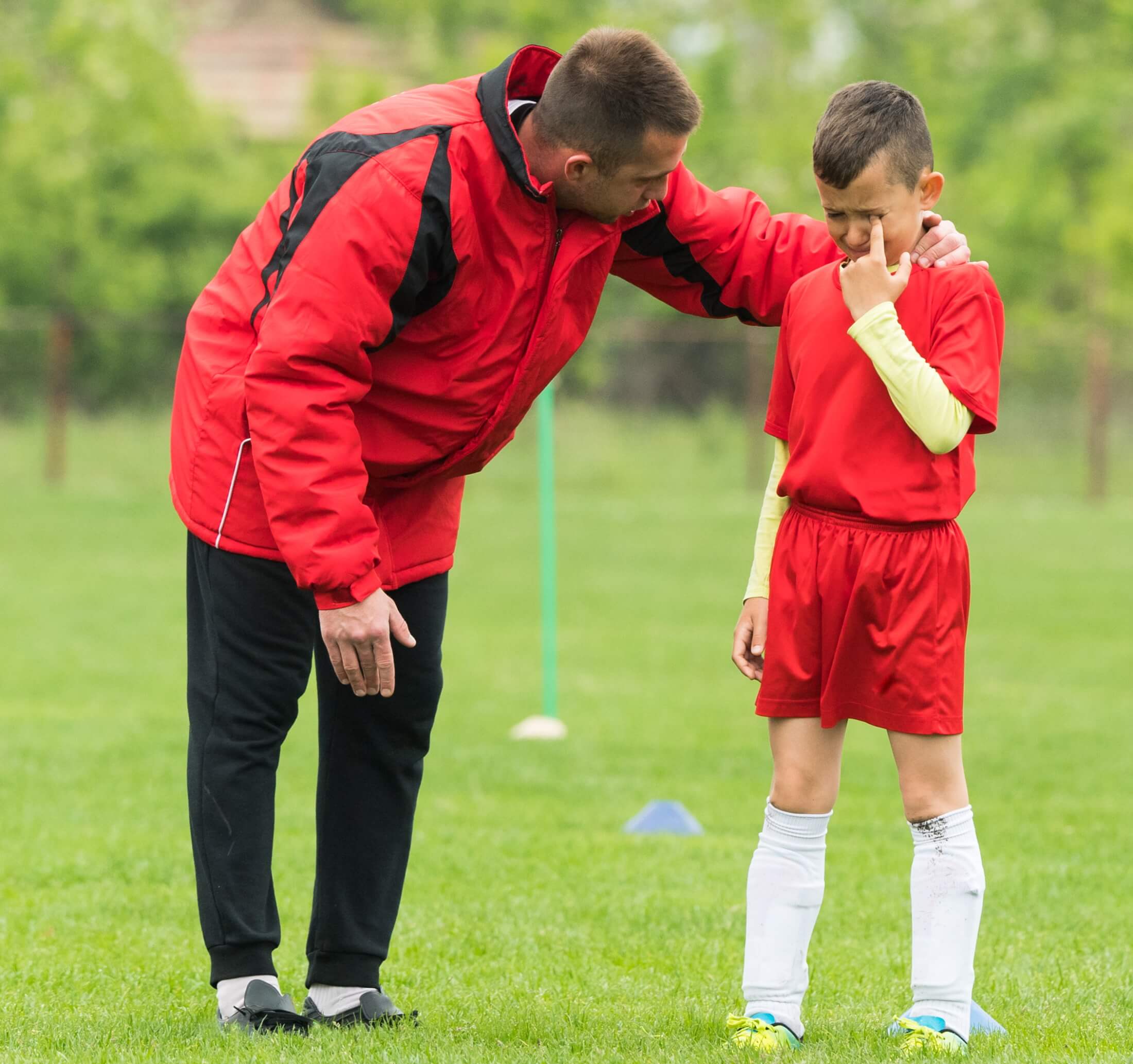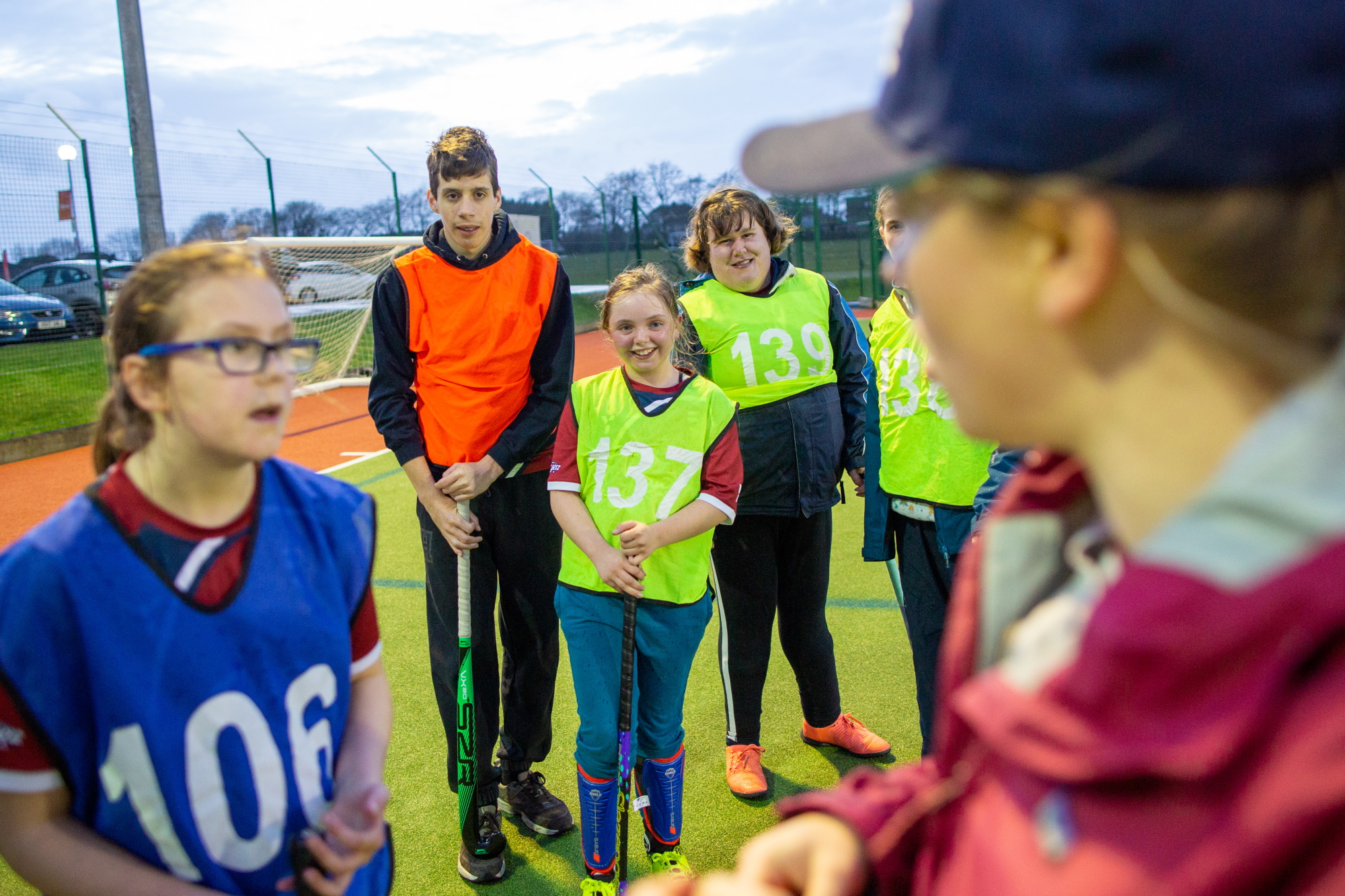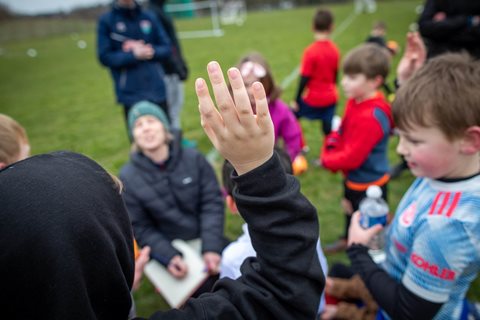Our cookies
We use essential cookies to make our website work smoothly for you. To make sure we're always improving, we'd like to use analytics to track how people use the site. We won't set non-essential cookies unless you give us permission. You can find more information about all the cookies we use in our Privacy and Cookie Policy.
Some cookies are a must for our website to function properly. If you turn off essential cookies, it may affect how you experience our site.
The non-essential cookies we use help us understand how you use our website and make improvements to enhance your experience.
Duty to Care and Child-First: A Winning Combination
The philosophies of duty to care and child-first coaching dovetail neatly. UK Coaching’s Head of Coaching and Policy Heather Douglas outlines their common attributes and explains how they can work together in a coaching context to enrich children and young people’s experience of physical activity and sport and enhance their holistic development.
.jpg?width=640&resizemode=force)
By Blake Richardson
The principles of Voice, Choice, and Journey that underpin child-first coaching mirror the six pillars of Duty to Care that are fundamental to delivering great coaching experiences for everyone.
The Play Their Way campaign endeavours to inspire cultural change in the way that children’s coaching is delivered. By embedding the principles of child-first coaching in your practice, and prioritising the rights of the child, you will be creating supportive environments where every child feels safe and included.
The same is true of Duty to Care, which goes beyond choice, stipulating that coaches have a responsibility and moral obligation to provide safe, caring, and inclusive coaching environments. The six pillars of Duty to Care are: Diversity, Inclusion, Physical Well-being, Mental Health and Well-being, Safeguarding and Safe to Practice.
While the positive outcomes of both philosophies intertwine, UK Coaching’s Heather Douglas points out where the subtle difference lies: “Duty to Care is an umbrella term for the holistic welfare of anybody who is a participant and being coached. So, it is a coach’s responsibility to integrate the six pillars into their practice.
Play Their Way takes a similar approach but with a laser focus on children and young people – because they are not adults, and they should not be seen as miniature adults. They are their own people, with their own voices, choices, and journeys to take.”
Child-first then is about paying particular attention to the nuances of coaching children and young people.
The bearings of a successful coaching journey
Think of the two coaching philosophies as your compass and map that will allow you to guide children and young people on a rewarding and educational journey through physical activity and sport.
Every coach needs to have a plan and a clear direction, but as every coach also knows, there is no one right way to coach children. Every child has their own abilities, needs, preferences, and motivations. These may change month to month, and even day to day, and be impacted by, not just shifting moods and feelings, but their environment, lifestyle changes, peers, parents, and a myriad of other factors.
A child-first coach will be able to change direction at will. That is to say, the will of the child, with children’s rights (their right to play, right to be heard, and right to develop), woven into the very fabric of child-first coaching.
A child-first coach then will be able to react quickly to reshape sessions and learning objectives according to the influences and circumstances of any given child on any given day.
Below are some examples of how the pillars of Duty to Care fit seamlessly into a child-first philosophy and how a keen grasp of both concepts will equip coaches with the tools and expertise to flex and adapt to the dynamic situations that will arise when working with children and young people.

Children’s safety and the domino effect
Let’s explore more closely what Heather calls the “dotted line” that exists between the pillars of Duty to Care (all the elements support and complement each other) and how they feed into the rights of Voice, Choice, and Journey, and into developing people holistically through good coaching.
Take the word ‘safety,’ a non-negotiable element of coaching.
You don’t have to dig very far to see how the Duty to Care pillar of Safeguarding is interwoven with the pillar of Inclusion, which is fundamental to child-first practice.
“From a child-first perspective, ‘safety’ encompasses both physical safety and psychological safety. If a child is excluded and is on the periphery of sessions, they will not feel safe in either respect,” explains Heather.
By making a child feel included, they will feel both physically safe and also psychologically safe to air their views (Voice) and engage in decision-making (Choice).”

Or take the Duty to Care pillar of Safe to Practice, which is vital in instilling trust in children and young people; trust that you have the right policies in place; that you won’t put them in harm’s way; that you are listening.
Understanding how to design sessions that have effective safety measures in place whilst also promoting fun, challenge, and risk-taking, generates psychological safety and physical safety in abundance.
This can set off a domino effect, empowering children’s voices and choices of how they want to play to explore risks in an appropriate manner.
By taking risks and experimenting in a safe environment, so children will learn how to manage their own risk, which is an important lifelong learning skill.
This is a shining example of how the pillars of both philosophies work in collective harmony. Pillar synergy.
From managing risk to learning it’s okay to fail
Let us examine in more detail the value of realising every child’s right to be listened to, express their views freely, participate in decision-making, and be free from discrimination.
Encouraging children’s voices, giving them real choices, and empowering them to shape their own sporting journey will make children feel safe and protected because they know the coach is really invested in their journey and that somebody has got their back,” says Heather.
When young people feel that they have a voice and are valued, their learning and development is optimised. This is because as children develop trust and rapport with their coach, they feel more comfortable expressing themselves, challenging themselves, and, crucially, learning that it’s okay to fail – an important life skill that builds resilience by making children stronger and more ready to face life’s challenges.
Heather adds: “It means that they can share their thoughts and feelings openly, try new things without fear of judgment, and learn from their mistakes without losing confidence. A coach who is supportive, respectful, and encouraging can help children grow not only as athletes, but also as individuals.”
Diversity in sport and physical activity means EVERYONE is afforded the opportunity to participate and feel valued, regardless of their gender, age, ethnicity, culture, religion, sexual orientation, or perceived ability. Inclusion is learning how to tailor your coaching to meet the needs of these diverse audiences and creating a welcoming and supportive environment for all.
Coaches can MARRY TOGETHER these Duty to Care pillars with ‘Voice, Choice, and Journey’ to help young people ‘play their way’ by empowering children to take ownership and more control of their learning and supporting ALL children to achieve their desired outcomes through the art of communication, facilitation, and collaboration.
Link between having a voice and physical well-being
Let’s turn our attention to the Duty to Care pillar of Physical Well-being.
The catalyst for the Play Their Way movement was a fall in the number of children meeting the Chief Medical Officer’s recommendation for physical activity in children, which is 60 minutes a day.
According to Sport England’s Active Lives survey (2021-22), 53% of children across England don’t exercise enough.
“It was then about looking at what the main motivator is in increasing activity levels among children, so that they become more physically active – which is fun and enjoyment,” says Heather.
The absence of fun (only 47% of children surveyed who did regularly exercise say they really enjoyed it) was that people were dropping out, and the physical well-being of our children and young people was suffering as a result.”
This insight is even more significant when you consider that activity levels in childhood are an accurate predictor of how active individuals are likely to be as adults and, in turn, how happy and how healthy they will be.
Moreover, the latest Coaching in the UK survey revealed that people don’t cite their coach’s technical ability as a key desirable attribute, and don’t consider attaining a high level of skill in their sport to be as important as was reported in previous years. What is most important to adults, as well as children, is a warm, welcoming environment, having fun, and being given constructive feedback.
.jpg)
To ensure the physical well-being of children in sport and physical activity, it is not enough to recognise that children and adults express similar wants and needs. Supporting children requires different strategies and interventions.
We need to recognise that children don’t necessarily feel they have permission to use their voice, whereas adults probably feel they do have permission to have two-way communication with their coach.
“Which is why we try and amplify the voice in child-first coaching and encourage coaches to allow children to ‘play their way’. That is how you attract and retain children in sport and physical activity and that is how you improve the physical well-being of our nation’s children.”
Communication: A powerful relationship enhancer
We have discussed the importance of connecting with your participants to build rapport from an inclusion, safe to practice, and learning perspective.
Let us finish by emphasising how effective communication is also an integral part of safeguarding.
The majority of coaching is based on communication skills, which include speaking (knowing when to speak and when to remain silent), listening (deep and active listening), and also noticing what is going on around you (professional curiosity).
It is another golden thread running through child-first coaching,” says Heather. “Every coach should develop effective strategies for communicating, connecting, and collaborating with the children in their sessions, because only then will physical, emotional, or mental issues reveal themselves.
“The thing around ‘voice’ particularly is that if children are encouraged to have a conversation with their coach and they naturally build up a rapport, and they tell them all the little things, then if something big happens, they are more likely to tell the coach if there is a safeguarding concern, because they feel they have a trusted two-way line of communication.”
Protecting our most precious resource
As coaches, we’re all on a journey when it comes to child-first coaching. But by embracing the six pillars of Duty to Care and putting the child-first pillars of Voice, Choice, and Journey at the heart of your coaching practice, you will be having a tremendously positive impact on the long-term health and happiness of the person as well as the performer.
The final words to Heather:
“Ultimately, people are the most important ingredient of physical activity and sport. According to Sport England’s Uniting the Movement strategy, it is the people who lead activities and sessions who are the most precious resource.
“And if you think about your most precious resource – it could be a child, a pet, or a family heirloom – you look after it with all your heart, don’t you. At UK Coaching, we are ‘Here for the Coach’. We look after our most precious resource by equipping it with all this learning, so that coaches can then look after their most precious resource: their participants.”
Other resources you may like...
Roles and Responsibilities of a Sports Coach
READ MORE
The Importance of Giving Children a Voice
READ MORESHARE THE MOVEMENT
Help spread the word by sharing this website with fellow coaches!
